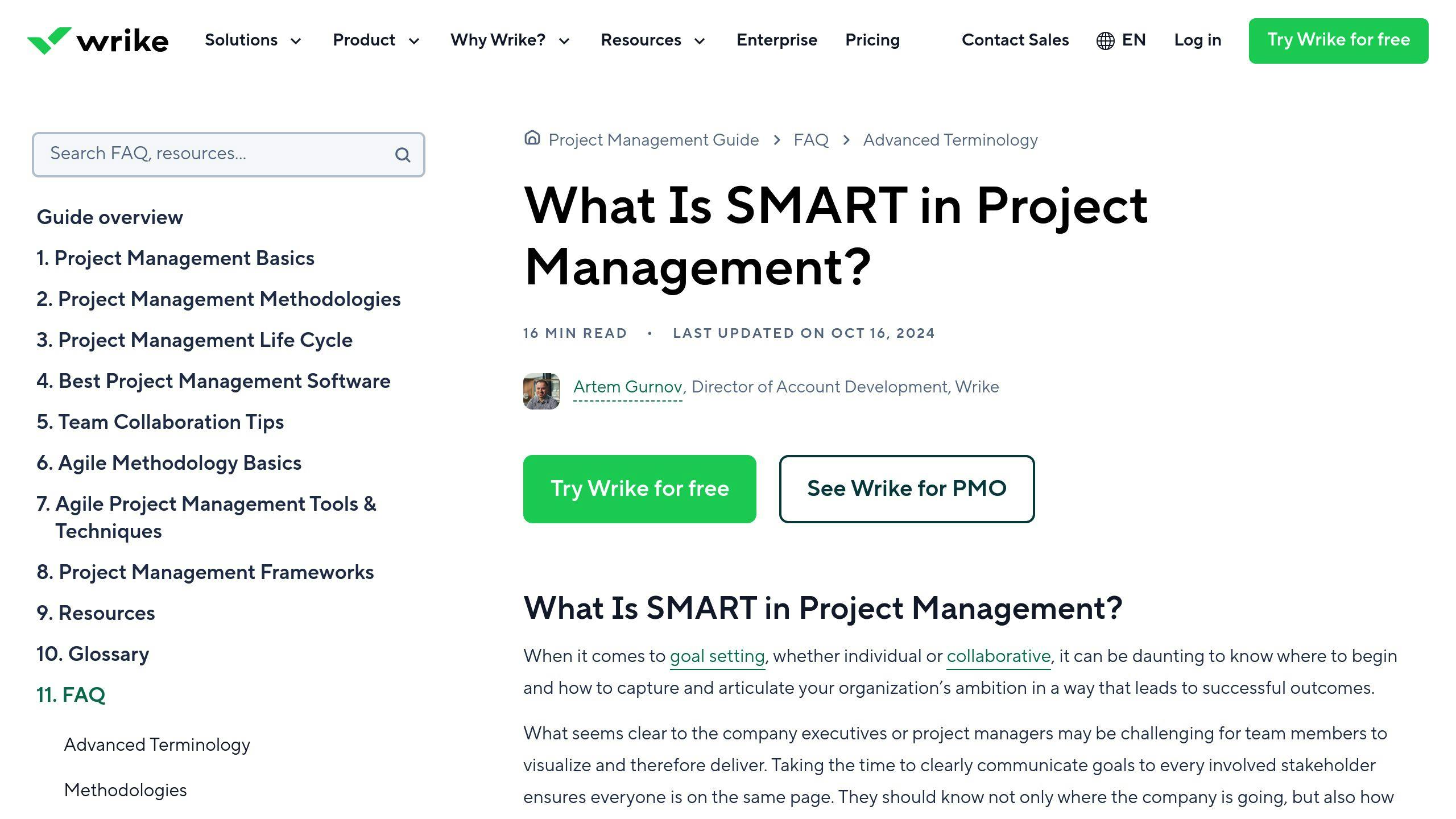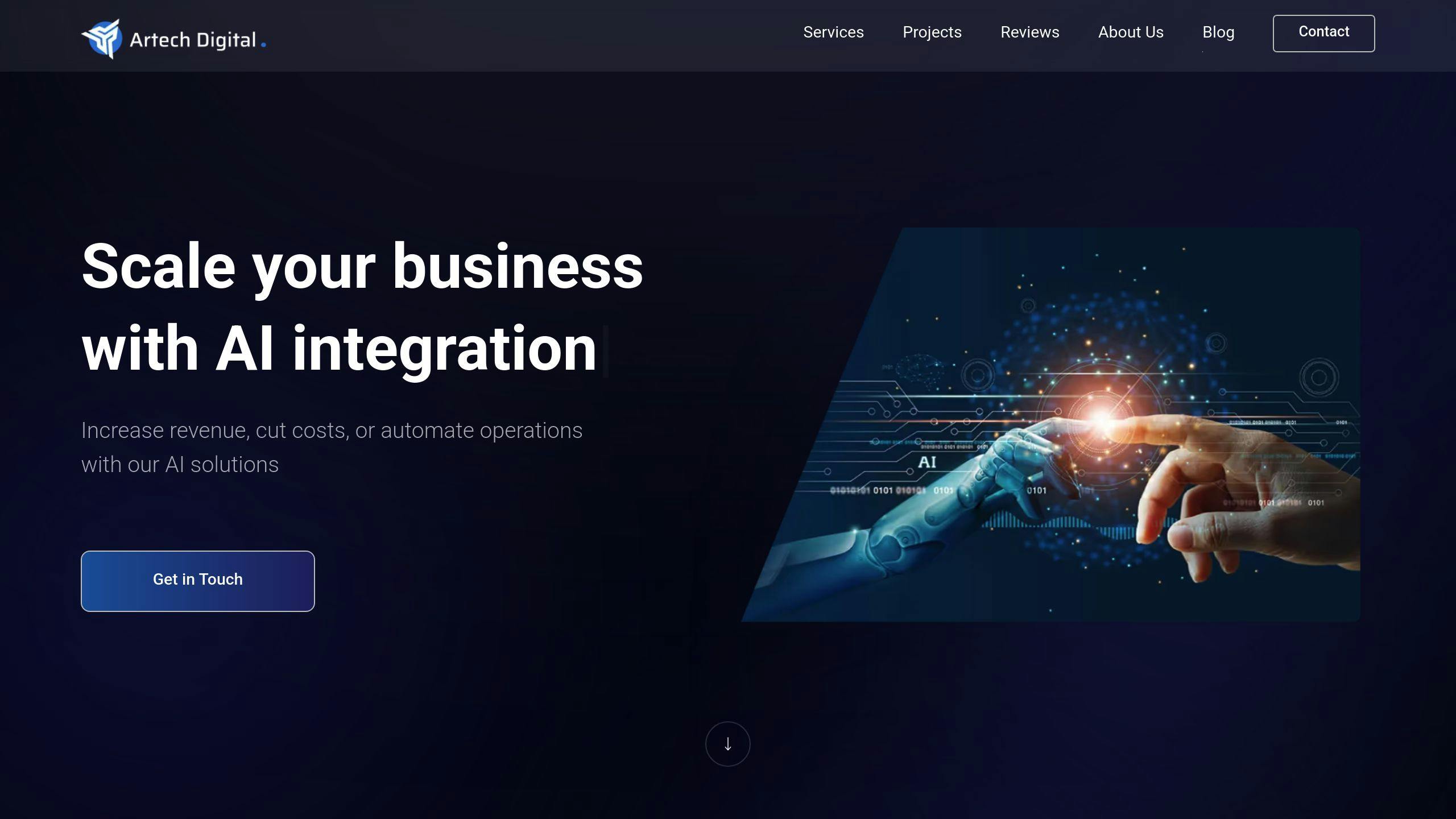
Want AI to truly benefit your business? Start by aligning your AI strategy with clear business goals.
Here’s how you can make it happen:
Quick Tip: Companies that align AI with business goals see up to 74% gains in customer experience and 69% improvements in operations.
Want to know more? Let’s break it down step-by-step.
Did you know that about 80% of AI projects fail? The main culprit? Vague goals and unclear success metrics. To avoid this pitfall, it's crucial to focus on outcomes that directly impact your business.
Before jumping into AI, take a step back and evaluate your operations. Identify areas where AI can genuinely make a difference:
| Key Questions | AI Solutions to Explore |
|---|---|
| Where are processes slowing down? | Automation, predictive maintenance |
| What frustrates customers the most? | AI-driven chatbots |
| How can we boost conversions? | Personalized recommendations, lead scoring |
| Are we struggling with slow data analysis? | Automated data pattern detection |
"Linking your AI strategy to your business strategy is the best way to ensure AI delivers maximum value for the business." - Bernard Marr

Once you've identified where AI can help, it's time to set SMART goals - Specific, Measurable, Achievable, Relevant, and Time-bound. For example, instead of saying, "improve customer service", aim for something like, "launch an AI chatbot to cut inquiry response time by 20% within three months."
Get input from stakeholders across departments when setting these goals. This ensures that the objectives are realistic, align with the company's broader strategy, and address specific departmental challenges. Plus, involving more voices early on can help spot potential obstacles and build stronger support for the initiative.
With well-defined goals, you're ready to create a roadmap that connects these objectives to actionable AI solutions.
Once you've set your SMART goals, the next step is turning those objectives into a structured AI roadmap.
The success of AI implementation depends on aligning the right technologies with your business goals. Here's how various AI tools can address common challenges:
| Business Objective | AI Solution | Expected Outcome |
|---|---|---|
| Improving Customer Service | AI Chatbots & Virtual Assistants | 30% faster response times |
| Enhancing Quality Control | Computer Vision Systems | 25% fewer defects |
| Boosting Sales Performance | Predictive Analytics | 15-20% higher conversion rates |
| Streamlining Processes | Machine Learning Workflows | 40% cut in manual tasks |
Balancing quick wins with long-term goals ensures AI delivers immediate results while supporting future growth.
Clear milestones are essential for tracking progress and maintaining focus. Your AI roadmap should include key phases like:
| Milestone | Timeframe | Examples |
|---|---|---|
| Pilot Project Launch | 3-6 months | Setting up data infrastructure, team training, basic automation |
| Full-scale Integration | 12-24 months | Advanced predictions, automated decisions, in-depth analytics |
"Measuring AI success ensures initiatives meet their goals and deliver tangible value." - Acacia Advisors
To monitor progress, define performance indicators tied to your roadmap's milestones. Here's a breakdown:
| Metric Type | Examples | Target Range |
|---|---|---|
| Operational | Speed of task completion, accuracy | 20-30% improvement |
| Financial | Cost savings, ROI | 15-25% increase |
| Customer-focused | Satisfaction, engagement levels | 30-40% improvement |
| Efficiency | Automation rates, error reduction | 25-35% improvement |
Artech Digital offers tailored AI solutions designed to align with your specific needs, ensuring your roadmap integrates both technical and business priorities.
With your roadmap set, the next step is ongoing performance monitoring to maximize AI's impact over time.
Measuring AI performance effectively means linking technical metrics to business goals. Here's how to set clear KPIs and use feedback loops to keep improving.
To succeed with AI, you need performance indicators that directly connect to your business objectives. Here are some key metrics to consider:
| KPI Category | Metrics | Target Impact |
|---|---|---|
| Strategic Growth | Market penetration, Innovation rates | 30-40% increase |
| Business Development | New product launches, AI-driven solutions | 25-35% growth |
| Technical Performance | Algorithm accuracy, System reliability | 20-30% improvement |
| Resource Efficiency | Infrastructure usage, Cost reduction | 15-25% savings |
Start with baseline metrics to track progress and validate your AI investments. Regular monitoring ensures your KPIs stay aligned with changing business needs.
"AI ROI requires a shift from immediate financial results to long-term strategic value."
Feedback loops help you adjust AI solutions as business priorities change. Here's a structured way to make that happen:
| Phase | Action Items | Expected Outcome |
|---|---|---|
| Data Collection | Real-time tracking, User feedback | Detailed insights |
| Analysis | Spot patterns, Assess impact | Clear improvement steps |
| Implementation | Refine algorithms, Optimize processes | Better AI performance |
| Validation | Verify results, Align with goals | Confirmed business impact |
For instance, an AI chatbot can cut customer service costs while also boosting satisfaction by providing quicker responses.
Artech Digital specializes in tailoring AI solutions to match your business goals, ensuring performance metrics drive meaningful results.
With KPIs and feedback loops in place, the next step is building collaboration across teams to maximize AI's potential.
Getting AI to work effectively in an organization isn't just about the tech - it’s about teamwork and clear communication across departments.
AI projects thrive when different skills and viewpoints come together. Here's a breakdown of key roles and their contributions:
| Team Role | Responsibility | How It Helps AI Projects |
|---|---|---|
| Technical Experts | Develop algorithms, integrate systems | Ensures the tech is doable and effective |
| Business Leaders | Align strategy, allocate resources | Keeps AI efforts tied to business goals |
| End Users | Provide feedback, test solutions | Confirms the AI works in real-world settings |
| Project Managers | Manage timelines, coordinate efforts | Keeps everyone on track and aligned |
When teams like data scientists and department heads collaborate, AI solutions are more likely to meet both technical and business needs. But building the right team is just the start - getting everyone else on board is just as crucial.
Communicating the value of AI to stakeholders ensures they’re engaged and supportive. Here’s how you can do it effectively:
| Method | Purpose | Outcome |
|---|---|---|
| Regular Updates | Share progress and milestones | Keeps stakeholders engaged |
| Workshops | Offer hands-on experience | Builds understanding and familiarity |
| Training Sessions | Teach practical AI skills | Encourages smoother adoption |
| Success Stories | Showcase real benefits | Boosts confidence and support |
Artech Digital highlights the importance of consistent communication and showing measurable results to keep stakeholders invested.

Artech Digital specializes in aligning AI technologies with business goals through tailored integration services.

Artech Digital provides a range of AI-driven solutions designed to tackle specific business needs:
| Service Category | Approach | Business Benefit |
|---|---|---|
| AI-Powered Web Apps | Customized for specific industries | Optimizes data usage for key sectors |
| Custom AI Agents | Automation tailored to roles | Streamlines processes effectively |
| Advanced Chatbots | Context-aware conversation models | Delivers industry-relevant support |
| Computer Vision Solutions | Visual recognition tailored to needs | Meets sector-specific quality demands |
| Machine Learning Models | Algorithms designed for businesses | Enables precise predictive insights |
| LLM Fine-tuning | Language processing for industries | Improves domain-specific communication |
Artech Digital ensures that its AI solutions are built to meet your business objectives. They start with an in-depth assessment, create tailored solutions, and integrate them seamlessly into existing systems. By tying their approach to SMART goals and key performance indicators (KPIs), they help businesses track progress and measure success at every stage.
Their process includes detailed business analysis, solution development with clear benchmarks, and ongoing improvements based on real-world results. The focus is on delivering practical, measurable outcomes that turn AI into a powerful tool for achieving business success.
Aligning AI with business goals requires a focused and results-driven strategy. According to recent data, 74% of companies report gains from AI in customer service and experience, while 69% see better performance in IT operations [2].
The key lies in setting clear goals and consistently tracking progress. Companies that succeed prioritize specific, measurable objectives directly tied to business results, ensuring their AI investments deliver real benefits.
To align AI with business objectives effectively, concentrate on these core areas:
| Focus Area | Key Actions | Expected Outcome |
|---|---|---|
| Strategic Planning | Define SMART goals and KPIs | Clear focus and measurable progress |
| Team Integration | Encourage collaboration across departments | Better adoption and ongoing improvements |
| Performance Management | Track results and refine strategies regularly | Consistent value from AI initiatives |
"Cross-functional collaboration and adoption are critical for AI-business alignment because they ensure that AI initiatives are integrated across the organization and that stakeholders are informed about AI benefits" [1].
Aligning AI with business needs is not a one-time task. It requires ongoing review and fine-tuning. By focusing on these steps, companies can ensure their AI efforts lead to measurable, impactful results that align with their strategic goals.

.png)
